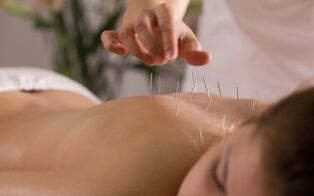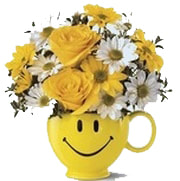Acupuncture is the most well known aspect of Traditional Chinese Medicine (TCM), which has been practiced in China for thousands of years.

Acupuncture aims at treating the person, along with the disease. This means that the acupuncturist looks at the patient as a whole, finds the cause of the illness and the imbalance in the body causing it by using the unique techniques and systerm of TCM diagnosis. Every aspect of the patient's life is considered by our practitoner before the therapeutic principle is decided and acupuncture points are selected. In the hands of a well-trained practitioner, acupuncture has broader applications beyond pain relief.
Very fine needles are inserted into points along the meridians (the pathway of vital energy linking body surface and internal organs ) with the aim of bringing the body to a state of dynamic balance and harmony. It is a holistic approach to illness, linking body, mind and emotions, also assist prevention against disease.
Acupuncture may be used alone or in conjunction with Chinese herbal medicine, moxibustion (the heating of specific acupuncture points using the herb Artemisia), or Chinese massage. It is likely that we will also offer dietary, exercise and lifestyle advice.
Very fine needles are inserted into points along the meridians (the pathway of vital energy linking body surface and internal organs ) with the aim of bringing the body to a state of dynamic balance and harmony. It is a holistic approach to illness, linking body, mind and emotions, also assist prevention against disease.
Acupuncture may be used alone or in conjunction with Chinese herbal medicine, moxibustion (the heating of specific acupuncture points using the herb Artemisia), or Chinese massage. It is likely that we will also offer dietary, exercise and lifestyle advice.
 The Central Nerve System. Retrieved from https://www.evidencebasedacupuncture.org/
present-research/acupuncture-anxiety/
The Central Nerve System. Retrieved from https://www.evidencebasedacupuncture.org/
present-research/acupuncture-anxiety/
How acupuncture works?
Many people have seen the pictures or models of the acupuncture meridian system. These meridians cannot be seen on the body but are considered in Traditional Chinese medicine (TCM) to be just as real as the blood vessels or nerve pathways as recognised in Western medicine.
It is along these meridians that vital energy (or life force) flows, carrying nourishment and information to all tissues and organs and allowing the body to function smoothly and efficiently. Each of the meridians is associated with a specific organ of the body, the activities of the internal organs all depend on the promoting and stimulating effect of the vital energy.
Disease occurs when some factor disrupts or blocks of the flow of vital energy along the meridians, which will further affects the associated organ or tissue and breaks the dynamic balance of internal environment.
The role of the acupuncturist is to restore the normal flow of life forces and re-establish the healthy internal balance by inserting very fine needles into points along the meridians and manipulating the engry flow.
Every aspect of the patient's life is considered by the practitioner before the points are selected - it may be impossible to change someone's life circumstance, but by using acupuncture the person may be strengthened so that they are more easily able to deal with what life brings their way.
Many people have seen the pictures or models of the acupuncture meridian system. These meridians cannot be seen on the body but are considered in Traditional Chinese medicine (TCM) to be just as real as the blood vessels or nerve pathways as recognised in Western medicine.
It is along these meridians that vital energy (or life force) flows, carrying nourishment and information to all tissues and organs and allowing the body to function smoothly and efficiently. Each of the meridians is associated with a specific organ of the body, the activities of the internal organs all depend on the promoting and stimulating effect of the vital energy.
Disease occurs when some factor disrupts or blocks of the flow of vital energy along the meridians, which will further affects the associated organ or tissue and breaks the dynamic balance of internal environment.
The role of the acupuncturist is to restore the normal flow of life forces and re-establish the healthy internal balance by inserting very fine needles into points along the meridians and manipulating the engry flow.
Every aspect of the patient's life is considered by the practitioner before the points are selected - it may be impossible to change someone's life circumstance, but by using acupuncture the person may be strengthened so that they are more easily able to deal with what life brings their way.
How long will a session of typical treatment take?
Acupuncture is a holistic treatment and we will take an extensive case history, covering every aspect of your health, diet and lifestyle. Your answers will help identify patterns of disharmony which will allow us to make an accurate diagnosis.
We will also take your pulse on both wrists and may ask to look at your tongue as both provide valuable information about your constitution and presenting condition.
After making a diagnosis we will decide the appropriate treatment. This may be acupuncture alone or Chinese herbs in combination or may include the use of moxibustion, remedial massage, or cupping therapy. We may also make recommendations regarding your diet and lifestyle.
A typical treatment will involve the insertion of acupuncture needles into points selected based on the diagnosis . The needles will stay in place for approximately 20-25 minutes, during which time many people drift into a state of deep relaxation or may even fall into a brief but sound sleep.
Therefore, an initial visit will usually take up to an hour and a follow-up treatment 45mins.
Acupuncture is a holistic treatment and we will take an extensive case history, covering every aspect of your health, diet and lifestyle. Your answers will help identify patterns of disharmony which will allow us to make an accurate diagnosis.
We will also take your pulse on both wrists and may ask to look at your tongue as both provide valuable information about your constitution and presenting condition.
After making a diagnosis we will decide the appropriate treatment. This may be acupuncture alone or Chinese herbs in combination or may include the use of moxibustion, remedial massage, or cupping therapy. We may also make recommendations regarding your diet and lifestyle.
A typical treatment will involve the insertion of acupuncture needles into points selected based on the diagnosis . The needles will stay in place for approximately 20-25 minutes, during which time many people drift into a state of deep relaxation or may even fall into a brief but sound sleep.
Therefore, an initial visit will usually take up to an hour and a follow-up treatment 45mins.
Will it hurt?
In comparison to needles which are used for an injection or to take blood, acupuncture needles are very fine, and they are often described as being not much thicker than a human hair. Most new patients are amazed how painless and relaxing acupuncture can be-the thought is worse than the reality.
Insertion of the needle is usually pain free, although occasionally you do feel something. Depending on what is being treated and the needle technique involved, you may feel a mild ache, numbness, or an 'alive sensation' at the needle. This isn't unpleasant and is a sign that the energy has been activated and acupuncture is doing it's stuff.
Insertion of the needle is usually pain free, although occasionally you do feel something. Depending on what is being treated and the needle technique involved, you may feel a mild ache, numbness, or an 'alive sensation' at the needle. This isn't unpleasant and is a sign that the energy has been activated and acupuncture is doing it's stuff.
Is acupuncture safe?

Chinese medicine including acupuncture is generally considered to be safe but occasionally (as with all health treatments) may be associated with possible adverse reactions in individual cases. Our qualified and experienced acupuncturists who have an in-depth knowledge of Chinese Medicine and the meridian system as well as anatomy and physiology, are skillful, caring and passionate to help you improve your health and well-being.
It is important to advise us if you are pregnant but pregnancy does not preclude acupuncture or its benefits. Babies and children may be treated with acupressure in lieu of the use of needles.
All acupuncture needles used in our clinic are pre-sterilized, single-use, disposable surgical stainless steel needles. The area around the point of insertion is also sterilized before insertion. All treatments are safeguarded by total confidentiality. It is important to advise us if you are pregnant but pregnancy does not preclude acupuncture or its benefits. Babies and children may be treated with acupressure in lieu of the use of needles.
It is important to advise us if you are pregnant but pregnancy does not preclude acupuncture or its benefits. Babies and children may be treated with acupressure in lieu of the use of needles.
All acupuncture needles used in our clinic are pre-sterilized, single-use, disposable surgical stainless steel needles. The area around the point of insertion is also sterilized before insertion. All treatments are safeguarded by total confidentiality. It is important to advise us if you are pregnant but pregnancy does not preclude acupuncture or its benefits. Babies and children may be treated with acupressure in lieu of the use of needles.
How many treatments will I need?

Length, number and frequency of acupuncture sessions vary with each person and condition. For most conditions, a series of several sessions is necessary to achieve the maximum benefit. Some people get relief immediately after a treatment; some notice improvement after a few hours, some after a few days. Acute conditions, such as sprains, generally require less time and frequency, whereas more chronic conditions require more treatment sessions. Initially you may be asked to attend for treatment twice a week, and then as symptoms improve, weekly or fortnightly treatment would be likely. Appointments are scheduled further and further apart after the optimal response has been achieved.